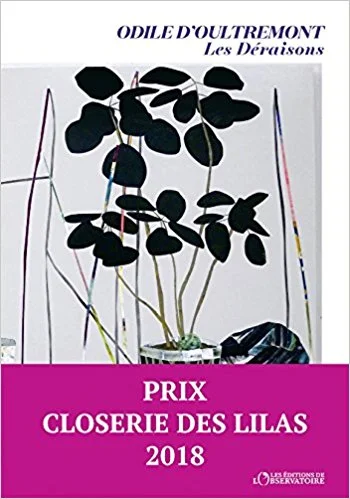THE COLOR OF AIR
Odile d’Oultremont
(Éditions de l’Observatoire, 222 pages, 2018)
For more than ten years, Adrian has led a well-regulated life centered on his job at Aquaplus, the city water management company. He is a compliant employee, courteous to a fault but with no meaningful human contact aside from his demanding mother. During one of his professional visits, he meets the endearing and whimsical Louise, a painter for whom daily life is the source of endless enchantment, and never a dull routine. They marry and share nine years of happiness under the guidance of Louise’s radiant disposition and exuberant creativity. But is imagination enough to counter the weight of reality?
When the novel opens, Adrian is sitting in the dock in a courthouse. It is not clear what offense he might have committed, but there is no doubt that he has lost Louise. As he waits for the judge to interrogate him, he reminisces about his wife and their life together: How he threw himself without hesitation into Louise’s magical universe, where the dog is called The Cat, where morning rituals are turned into joyful performances, and the most mundane objects are transfigured by the power of Louise’s fanciful mind. Thanks to Louise, the unadventurous Adrian learns to master “a new keyboard from which he has replaced the keys one after the other,” and on which even “unexpected new functions have appeared.”
Following a corporate downsizing, Adrian is retained but relegated to, and then forgotten in, an obscure cubicle at the end of a ghostly corridor. Adrian bears the alienation of this Kafkaesque administrative decision, because since he can still continue to act as the “sponsor of Planet Louise.” And when she is diagnosed with cancer, his invisibility in the office allows him to devote himself fully to her care. No one even notices his absence.
Louise’s descent into illness and the way she faces it makes for some of the most moving passages of this book. Far from being just eccentric or childish, she is above all “a qualified worker of the imaginary.” Thanks to her endless curiosity, she faces the medical apparatus and the slow deterioration of her body with lucidity, courage, and resolute cheerfulness.
The Art of Unreason has been compared to Boris Vian’s masterpiece, The Foam of the Daze. They are both poignant love stories haunted by death and infused with poetry, and in which the surreal elements do not prevent the reader from experiencing an authentic and emotionally convincing world. But in this first novel, d’Oultremont has found her own unique voice. Her dazzlingly original prose never ceases to surprise us at every turn, whether she evokes the dehumanized environment of twenty-first-century corporations or the intimacy of true love.
Odile d’Oultremont is a screenwriter and filmmaker. Les Déraisons is her first novel.

